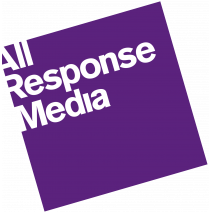Over the last decade, opportunities under the umbrella of TV sponsorship have moved forward significantly. When previously these broadcast partnerships were solely for those high impacting, flagship programmes such as Britain’s Got Talent and X Factor, brands now have an opportunity to sponsor almost anything they want from exclusive programmes, preferred time-bands or days of week, to specific genres and strands or even entire station takeovers across both linear and VOD platforms. These changes have unleashed the usage of sponsorship for the purposes of driving efficient customer acquisition within performance-based campaigns and strategies.
Here are a few reasons why you should consider TV sponsorship, even when looking at performance metrics:
1. TV sponsorship offers great value to deliver cost-effective customer acquisition’s
Whilst this isn’t the case in all opportunities, from a purely performance perspective, an outstanding, late deal on a prime-time programme, or an entire day channel partnership can deliver against core customer acquisition key performance indicators (KPIs), better than the same activity in the ad breaks of that airtime. With opportunities to save up to 75% vs. the relevant airtime in spot, the increasing frequency and opportunities to be in national or premium regional peak airtime TV sponsorship can deliver an efficient response at a greatly reduced like-for-like price.
2. The right opportunity can help to build your brand, increase your market share…and can even help to launch your brand on TV
Chambord, the premium French black raspberry liquor company proved this back in 2015 with their sponsorship of Revenge on E4. With almost non-existent brand awareness they wanted to look at TV sponsorship as a means of growing their share in the highly competitive beverage market. The result…they exceeded all expectations and saw an increase in sales of 47% year-on-year.
3. TV sponsorship can get you access to those hard to reach audiences at a better value
With the reach and frequency that TV sponsorships can deliver – throughout days, time-bands and regions – to match this against some of those more premium priced, hard to reach audiences at the same scale through traditional spot buys would be astronomically expensive. A recent study undertaken by Channel 4 has shown that sponsorship had the highest cut-through with two thirds of the notoriously difficult to engage 16-34 audience.
4. Delivers an unspoken level of trust in your brand
The association with a programme or station can really elevate your brand, with their popularity or principles that people associate with them, these can rub off on your brand and increase their perceived prestige and values. “If they do sponsor a TV programme…I would probably take that a bit more seriously. I think it makes it more credible, the fact that it is attached to a programme”. Research participant, The Truth about Youth, 2015
5. Cue the programme…
In a market where non-live TV viewing has increased +1200% since 2016 (Source: BARB) recognisable sponsorship bumpers act as the perfect trigger to stop your fast-forwarding of ads in-between programmes breaks. Whilst advertisers aren’t paying for those fast-forwarded impacts it also means that consumers aren’t seeing those brands – give your sponsorship bumpers that extra cut through!
All Response Media viewpoint
If bought at the right cost, TV sponsorship can certainly be considered as an extension of any campaign, even one with performance-related targets. Playing the short-term market can be a great entry into TV sponsorship and there are opportunities to make some significant savings if you can time it right.
Whilst there are some restrictions to what you can and can’t say on a sponsorship bumper, there is also a great opportunity within those 10-15 second slots to show another side of your brand – one that is relevant to the programme, daypart or station that you are sponsoring – and use their history and audience to deliver your results. These restrictions on the inclusion of calls to action are lessening to an extent, meaning that driving an efficient response from a sponsorship ident is more plausible. Implicit URLs are now possible, and depending on the saleshouse, even phone numbers can now be included.
All in all, TV sponsorship offers a huge opportunity for brands to establish their authority in a certain audience or genre (Babbel on ITV London Weather), it can show audiences a different side to the brand (Casper and The Travel Channel) and it can also deliver great standout and coverage in an otherwise competitive marketplace (Nissan and the Premier League or giffgaff and The Voice). Utilising tools such as ARMalytics® allow us to measure TV sponsorship just as we would a traditional TV campaign so now the only challenge is finding the right opportunity!

